
Journal of Soil Science and Plant Nutrition
Scope & Guideline
Innovating research for a greener, healthier planet.
Introduction
Aims and Scopes
- Soil Fertility and Nutrient Management:
Research on improving soil fertility through various amendments, including organic and inorganic fertilizers, biochar, and nanotechnology. The journal explores how these practices affect soil health, nutrient retention, and crop productivity. - Plant-Microbe Interactions:
Studies investigating the role of soil microorganisms, including bacteria and fungi, in enhancing plant growth, nutrient uptake, and stress resilience. This includes the use of biofertilizers and mycorrhizal associations. - Environmental Stress Mitigation:
Research focused on understanding how different plant species and amendments can mitigate the effects of abiotic stresses such as salinity, drought, and heavy metal toxicity on crops. - Sustainable Agricultural Practices:
Exploration of innovative agricultural practices, including crop rotation, cover cropping, and conservation tillage, aimed at enhancing soil health and sustainability in agroecosystems. - Soil Remediation Techniques:
Studies aimed at developing and assessing methods for soil remediation, particularly in contaminated lands, using various organic and inorganic amendments to restore soil health.
Trending and Emerging
- Biofortification and Nutrient Enhancement:
There is an increasing focus on biofortification techniques aimed at enhancing the nutritional quality of crops, particularly through the use of micronutrient fertilizers and biostimulants to combat hidden hunger. - Nanotechnology in Agriculture:
Research on the application of nanomaterials in agriculture, particularly as fertilizers and soil amendments, is rapidly gaining traction. This includes studies on nanofertilizers that improve nutrient uptake and stress tolerance. - Plant Stress Resilience:
Emerging studies are emphasizing plant resilience to abiotic stresses, such as drought and salinity, through various interventions, including the use of plant growth-promoting rhizobacteria and organic amendments. - Soil Health and Ecosystem Services:
There is a growing trend towards understanding soil health not just as a medium for plant growth, but as a critical component of ecosystem services, including carbon sequestration, biodiversity, and water regulation. - Integrated Soil Fertility Management:
Research on integrated approaches that combine organic and inorganic amendments for improving soil fertility is trending, reflecting a holistic understanding of soil and plant interactions.
Declining or Waning
- Traditional Chemical Fertilizers:
There is a notable decline in studies solely focused on traditional chemical fertilizers without integrating sustainable practices. Researchers are increasingly exploring organic and innovative fertilizers, leading to a reduced emphasis on conventional methods. - Single Crop Systems:
Research on single crop systems, particularly in the context of monoculture, is declining. There is a growing focus on intercropping and diversified cropping systems, which are seen as more sustainable and resilient. - Soil Erosion Studies:
While still important, the frequency of studies explicitly focused on soil erosion has decreased, possibly due to a shift towards integrated soil management practices that address erosion as part of broader soil health strategies. - Heavy Metal Contamination:
Research specifically targeting heavy metal contamination in soils appears to be waning, as newer studies increasingly integrate this issue within broader themes of soil health and sustainable agriculture.
Similar Journals
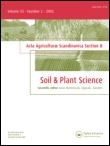
ACTA AGRICULTURAE SCANDINAVICA SECTION B-SOIL AND PLANT SCIENCE
Cultivating Knowledge for a Sustainable Agricultural FutureACTA AGRICULTURAE SCANDINAVICA SECTION B-SOIL AND PLANT SCIENCE, published by Taylor & Francis AS, is a distinguished journal dedicated to the fields of Agronomy, Crop Science, and Soil Science. With an impressive impact factor, and categorized in Q2 for both Agronomy and Crop Science and Soil Science as of 2023, this journal is an essential resource for researchers, professionals, and students aiming to advance their understanding of soil-plant interactions and sustainable agricultural practices. Operating since 1992 and continuing through to 2024, ACTA aims to publish high-quality, peer-reviewed research that encourages the applicability of advanced scientific knowledge in real-world agricultural settings. While the journal is not open access, it remains widely accessible through institutional subscriptions, reflecting its commitment to disseminating essential findings and fostering innovation in soil and plant science worldwide. Nestled in the vibrant academic environment of Norway, ACTA AGRICULTURAE SCANDINAVICA serves as a key platform for nurturing groundbreaking research that informs sustainable agricultural policies and practices globally.
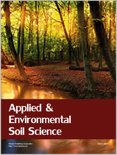
Applied and Environmental Soil Science
Uncovering vital insights for sustainable soil and environmental practices.Applied and Environmental Soil Science, an esteemed journal published by HINDAWI LTD, focuses on disseminating high-quality research in the fields of soil science and environmental applications. With an ISSN of 1687-7667 and an E-ISSN of 1687-7675, this open-access journal has been a vital resource for the academic community since its inception in 2009. As of 2023, it holds a commendable position in the Q2 category for both Earth-Surface Processes and Soil Science, highlighting its impact in these crucial disciplines. The journal’s rankings further affirm its significance within the field, being placed 61st in Earth and Planetary Sciences and 58th in Agricultural and Biological Sciences. Researchers and practitioners alike benefit from the collaborative platform it offers for sharing innovative studies essential for sustainable soil management and environmental integrity. With a focus on advancing knowledge and fostering interdisciplinary dialogue, Applied and Environmental Soil Science stands as a crucial pillar for scholars and professionals dedicated to addressing the pressing challenges of soil and environmental health.
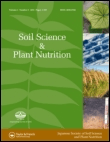
SOIL SCIENCE AND PLANT NUTRITION
Advancing sustainable practices for a greener tomorrow.SOIL SCIENCE AND PLANT NUTRITION, published by Taylor & Francis Ltd, stands as a prominent journal in the fields of plant science and soil science, with its impact reflected in its Q2 ranking across both categories in 2023. Established in 1955, this journal provides a vital platform for researchers, professionals, and students dedicated to understanding the complex interactions between soil and plant nutrition, with an emphasis on advancing sustainable agricultural practices. With an impressive Scopus ranking, placing it in the 75th percentile for Plant Science and the 71st for Soil Science, it attracts high-quality, peer-reviewed articles that contribute significantly to the body of knowledge in these disciplines. While the journal does not currently offer Open Access options, its comprehensive scope encompasses studies from fundamental research to applied science, making it an essential resource for anyone engaged in soil management, agronomy, or related fields.
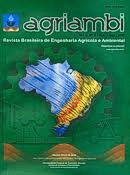
Revista Brasileira de Engenharia Agricola e Ambiental
Championing Open Access to Transformative Agricultural ResearchRevista Brasileira de Engenharia Agricola e Ambiental, published by the Universidade Federal de Campina Grande, serves as a pivotal platform for researchers and professionals in the fields of agricultural and biological sciences, agronomy, and environmental engineering. With an open-access policy since 2000, this journal aims to foster global dissemination of innovative research and practices, ensuring that high-quality findings are accessible to all. Operating in Brazil, it holds notable rankings, including Q2 in the categories of Agricultural and Biological Sciences (miscellaneous) and Agronomy and Crop Science, indicating its strong academic impact and influence within these fields. As of 2023, it ranks #68 out of 193 in Agricultural and Biological Sciences and #188 out of 406 in Agronomy and Crop Science, representing its commitment to advancing scientific knowledge. The journal primarily focuses on publishing studies that address challenges in agricultural engineering and environmental sustainability, making it an essential read for students, researchers, and professionals who are dedicated to innovation and excellence in these dynamic fields.
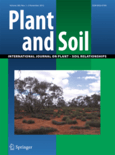
PLANT AND SOIL
Cultivating insights for sustainable agriculture and soil health.PLANT AND SOIL is a prestigious academic journal that has been at the forefront of plant and soil research since its inception in 1948. Published by SPRINGER in the Netherlands, this journal has carved a niche as a leading source of high-quality, peer-reviewed articles, which are essential for researchers, professionals, and students in the fields of Plant Science and Soil Science. With an impressive impact factor placing it in the Q1 category of both disciplines, it ranks 50th in the field of Plant Science and 24th in Soil Science, highlighting its influence in the scientific community. Although not available as open access, the journal provides a wealth of knowledge and insights into the interactions between plants and soils, exploring critical topics such as soil health, crop productivity, and sustainable agriculture practices. Researchers who wish to contribute to this vital area of study through their empirical findings will find PLANT AND SOIL to be an invaluable platform for disseminating their work and connecting with a network of leading scholars committed to advancing our understanding of these essential ecosystems.

INDIAN JOURNAL OF AGRICULTURAL SCIENCES
Nurturing insights for a greener tomorrow.Welcome to the Indian Journal of Agricultural Sciences, a vital resource for researchers and professionals in the field of agricultural sciences, published by the esteemed Indian Council of Agricultural Research. Established in 1974, this journal aims to disseminate high-quality research and developments in agronomy and crop science, facilitating knowledge exchange and advancement within the agricultural community. Though currently classified in the Q4 category according to 2023 data, it provides an essential platform for publication, contributing valuable insights towards sustainable agricultural practices. With an ISSN of 0019-5022 and an E-ISSN of 2394-3319, the journal houses important research that spans decades of convergence and collaboration, promoting innovation in agriculture across India and beyond. As an open access platform, it invites contributions that reflect a wide array of agricultural disciplines to foster sustainable food systems that address the challenges of food security. Join the network of scholars and practitioners by sharing your research and engaging with the profound work being done in this transformative field.

ACS Agricultural Science & Technology
Pioneering Research for a Sustainable Agricultural LandscapeACS Agricultural Science & Technology, published by the American Chemical Society, is an influential journal dedicated to the advancement of agricultural research and technologies. Since its convergence in 2021 and continuous publication until 2024, the journal has established itself in the fields of Agricultural and Biological Sciences, Agronomy and Crop Science, Food Science, and Plant Science, having achieved a commendable Q2 ranking across these categories in 2023. This signifies its growing impact and relevance within the global research community, evidenced by its Scopus rankings, which place it in the top percentiles of its fields. Although currently not an open-access journal, it provides a critical platform for disseminating pioneering research that addresses pressing agricultural challenges, fostering innovation in crop production, food security, and sustainable practices. As such, it serves as an essential resource for researchers, professionals, and students aiming to contribute to the future of agricultural science.
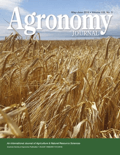
AGRONOMY JOURNAL
Leading the Way in Agronomic Knowledge and DiscoveryThe Agronomy Journal, published by Wiley, is a leading platform for cutting-edge research in the field of agronomy and crop science. Established in the United States, this prestigious journal carries the ISSN 0002-1962 and E-ISSN 1435-0645, with its coverage spanning from 1976 to 2024, showcasing a wealth of knowledge over decades. The journal is recognized in the top quartile (Q1) of its category, making it a highly respected source for quality literature, ranking #108 out of 406 in the Scopus database and reflecting a 73rd percentile standing in agricultural and biological sciences. While it operates under traditional access options, its commitment to disseminating valuable scientific inquiry aligns with the objectives of advancing sustainable agricultural practices globally. The Agronomy Journal serves as an indispensable resource for researchers, professionals, and students eager to stay abreast of significant advancements and discussions influencing the future of crop science and agronomic research.
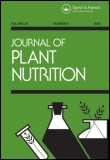
JOURNAL OF PLANT NUTRITION
Innovating Agricultural Practices Through Rigorous ResearchJOURNAL OF PLANT NUTRITION, published by Taylor & Francis Inc, is an esteemed peer-reviewed journal dedicated to advancing the field of plant nutrition and agronomy. With an ISSN of 0190-4167 and an E-ISSN of 1532-4087, this journal has been at the forefront of research since its inception in 1979 and continues to provide critical insights through 2024 and beyond. It is recognized for its rigorous scholarship, ranking Q2 in Agronomy and Crop Science and Q3 in Physiology as of 2023, highlighting its significance in both the agricultural and biological sciences. The journal's Scopus ranks further reinforce its impact, placing it in the 71st percentile for Agronomy and Crop Science and the 42nd percentile for Physiology. Researchers, professionals, and students alike benefit from its comprehensive coverage of topics, fostering a greater understanding of plant nutrient dynamics and their implications for sustainable agriculture. While the journal is not open access, it remains a vital resource for those dedicated to advancing agricultural practices and enhancing crop productivity in an era of global food challenges.
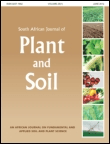
South African Journal of Plant and Soil
Innovating research for a greener tomorrow.South African Journal of Plant and Soil is an esteemed academic publication dedicated to advancing the fields of Ecology, Plant Science, and Soil Science. Published by TAYLOR & FRANCIS LTD in the United Kingdom, this journal has been a vital resource since its inception in 1984, providing a platform for innovative research and scholarly articles that address critical issues in plant and soil management. With a current impact factor placing it in the Q3 category according to the 2023 rankings, it occupies an influential position within the academic community, especially amongst researchers focused on agricultural and environmental sciences. Although not an open-access journal, it remains accessible to a broad audience through libraries and institutions that recognize its value in facilitating ecologically and environmentally focused discussions. The journal's ongoing commitment to publishing high-quality research ensures that it plays a pivotal role in nurturing knowledge and fostering advancements in sustainable practices across southern Africa and beyond.